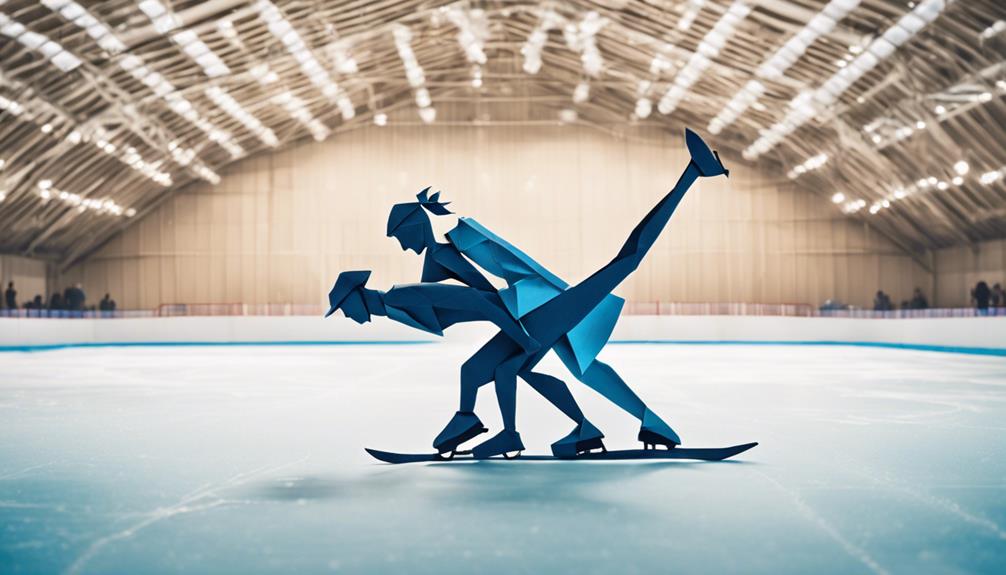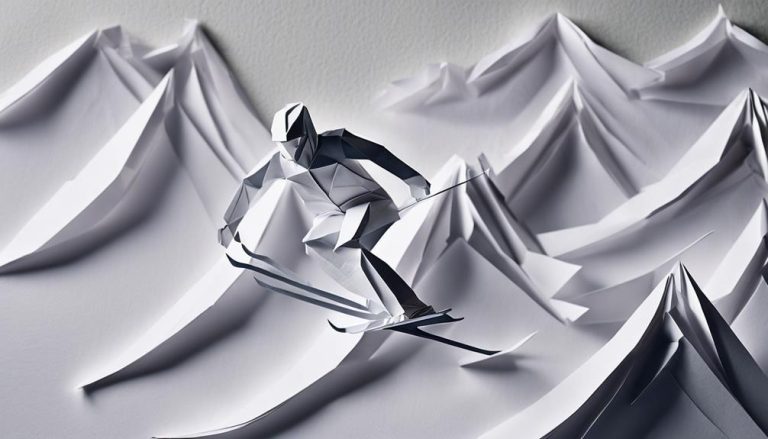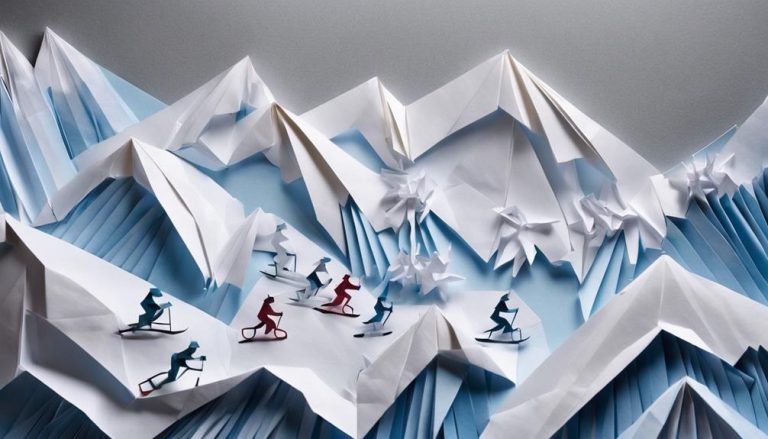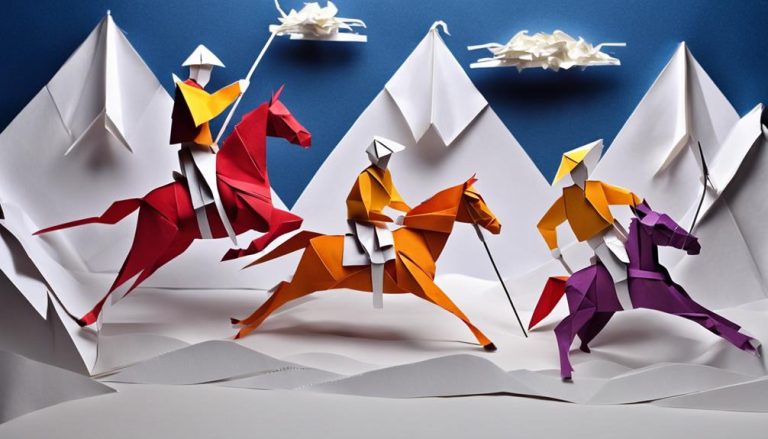General Rules of Figure Skating
As you step into the world of figure skating, understanding the rules that govern this precise and artistic sport is paramount. You'll need to meet age and classification requirements to compete, with senior events open to skaters 16 and older, and junior events to those 14 and older. Programs have specific length and content requirements, with jumps, spins, and footwork playing a pivotal role. Edges, crossovers, and lifts are also key elements, and music selection and audio formatting are imperative for ice dance and pairs. With so many details to master, staying on top of the rules is fundamental – and there's more to explore in the world of figure skating.
Eligibility and Qualification Rules

To be eligible to compete in figure skating events, you must meet the International Skating Union's (ISU) specific age and citizenship requirements. The ISU has established age restrictions to provide a fair and safe competition environment. For singles, pairs, and ice dance, you must be at least 16 years old to compete in senior events, and at least 14 years old to compete in junior events. However, these age restrictions may vary depending on the specific competition and the skater's classification.
Skater classification is another vital aspect of eligibility. The ISU recognizes three categories: novice, junior, and senior. Each category has its own set of rules and requirements, including age restrictions. As a skater, you'll need to meet the specific requirements for your classification to be eligible to compete. Understanding the ISU's eligibility and qualification rules is essential to navigate the competitive figure skating landscape. By meeting these requirements, you'll be well on your way to competing in figure skating events and pursuing your passion for the sport.
Program Length and Content
When you step onto the ice to perform your program, you'll need to adhere to strict timing guidelines, as the ISU has established specific program length requirements for each discipline. For singles, pairs, and ice dance, the short program is limited to 2 minutes and 50 seconds, while the free skate can last up to 4 minutes and 30 seconds. In synchronized skating, the short program is 2 minutes and 50 seconds, and the free skate is 4 minutes and 30 seconds.
Your program's content is also vital. You'll need to choose a program theme that resonates with you and your music selection. From classical to contemporary, the options are endless. Choreography options are also vast, allowing you to express yourself through intricate footwork, powerful jumps, and mesmerizing movements. Confirm your program flows smoothly, with a clear beginning, middle, and end. Remember, your program's length and content are vital to your overall score, so plan wisely to showcase your skills and artistry.
Jump Combinations and Sequences

As you explore jump combinations and sequences, you'll discover that understanding the different types of combinations and sequence requirements is vital to maximizing your score. You'll need to familiarize yourself with the rules governing jump order to verify that your routine meets the technical requirements. By mastering these elements, you'll be able to execute complex jump combinations and sequences that impress the judges and earn you high points.
Types of Combinations
In figure skating, you'll encounter two primary types of combinations: jump combinations, which involve executing two or more jumps in immediate succession, and jump sequences, which are series of jumps separated by other movements or steps. These combinations are essential to your success in competition, as they showcase your technical skill and artistry.
When it comes to competition strategies, understanding the psychology behind jump combinations and sequences is key. You must be able to execute these elements with confidence and precision, as they can make or break your program. Skater psychology plays a significant role in mastering these combinations, as mental preparation and focus are essential for success.
As you develop your skills, you'll find that jump combinations and sequences require a deep understanding of your body positioning, edge control, and timing. By mastering these elements, you'll be able to execute complex combinations with ease, giving you a competitive edge in the world of figure skating.
Sequence Requirements
To successfully execute jump combinations and sequences, you must meet specific sequence requirements, including the correct takeoff and landing edges, rotation, and jump timing. These requirements guarantee that your jumps are executed with precision and control, resulting in a more impressive and cohesive performance.
When creating jump combinations and sequences, element placement is vital. You should strategically place each jump to maximize your score and create a visually appealing pattern. Pattern creation involves carefully selecting the order and placement of jumps to showcase your skills and artistry. By thoughtfully designing your sequence, you can create a mesmerizing performance that wows the judges and audience alike.
Jump Order Rules
When crafting jump combinations and sequences, you'll need to adhere to specific jump order rules to facilitate a seamless and cohesive performance. These rules guarantee that your jumps flow logically and don't disrupt the overall rhythm of your program.
In terms of jump timing, you'll want to ponder the ideal placement of each jump to maximize your score. Typically, it's best to place your most challenging jumps early in the program, when you're fresh and energized. As you progress, you can build momentum and confidence, making it easier to execute subsequent jumps.
Skater strategy also plays a vital role in jump order rules. You'll need to think strategically about which jumps to combine and in what order, taking into account your strengths, weaknesses, and the overall flow of your program. By doing so, you'll be able to create a cohesive and engaging performance that showcases your skills and artistry. By mastering jump order rules, you'll be well on your way to delivering a standout performance that will leave a lasting impression on the judges and audience alike.
Spin and Footwork Requirements
As you explore the Spin and Footwork Requirements in figure skating, you'll need to master spin positions that showcase your control and precision. You'll also need to understand the different types of footwork, including steps, turns, and movements that seamlessly connect your program. Additionally, you'll have to demonstrate proficiency in edges and crossovers, which are essential components of footwork sequences.
Spin Positions
In figure skating, you typically assume one of three basic spin positions: upright, sit, or camel, each requiring precise footwork and body alignment to execute successfully. As you master these fundamental positions, you'll develop the foundation for more advanced spin techniques.
To refine your spin positions, focus on the following key elements:
- Body Alignment: Maintain a straight line from head to heels, engaging your core and keeping your shoulders relaxed.
- Spin Techniques: Practice entry and exit strategies, such as using crossovers or three-turns to seamlessly shift into and out of your spin.
- Edge Quality: Verify you're using the correct edge (inside or outside) to initiate and sustain your spin, as this affects your rotation and control.
- Posture and Center: Keep your posture upright and your center of gravity over your feet, allowing you to rotate efficiently and maintain balance.
Types of Footwork
You'll need to master four primary types of footwork to execute spins successfully: forward and backward crossovers, forward and backward three-turns. These fundamental footwork elements are the building blocks of advanced spin combinations and sequences. As you progress in your figure skating journey, you'll find that refining your footwork is essential for a seamless shift between spin positions and footwork segments.
The Footwork Evolution is a continuous process, requiring you to adapt and refine your technique to execute complex footwork patterns. Footwork Choreography plays a pivotal role in crafting a cohesive and engaging program. By mastering the primary footwork types, you'll be able to create intricate and dynamic footwork sequences that showcase your artistry and technical prowess.
Edges and Crossovers
Your mastery of edges and crossovers is essential for executing spins and footwork sequences with precision and control. As a figure skater, you need to develop the skills to shift seamlessly between edges and execute crossovers with confidence. Edge control is critical, as it enables you to maintain speed, direction, and balance during complex movements.
To master edges and crossovers, focus on the following key elements:
- Edge quality: Establish your edges are clean, sharp, and well-defined, allowing you to maintain control and precision.
- Crossover techniques: Practice different crossover styles, such as the 'cross-behind' and 'cross-in-front,' to develop muscle memory and fluidity.
- Edge shifts: Focus on smooth, seamless shifts between edges, using your knees and ankles to initiate the movement.
- Core engagement: Engage your core muscles to maintain stability and balance, guaranteeing you can execute edges and crossovers with precision and control.
Lifts in Pair Skating

Lifts, a hallmark of pair skating, require precise timing and trust between partners as they execute intricate overhead movements, with the male partner typically serving as the lifter and the female partner as the flyer. As you prepare to execute a lift, it's essential to focus on Lift Techniques, ensuring a seamless and safe experience for both you and your partner. Your partner's trust in you is crucial, and it's built on a foundation of mutual respect, clear communication, and consistent practice.
In a lift, the lifter supports the flyer's body, taking care to maintain control and balance. You'll need to develop the strength, power, and coordination to execute lifts with precision and confidence. Meanwhile, the flyer must trust the lifter, surrendering to the movement and maintaining a strong, centered position. As you master various lift techniques, you'll find that Partner Trust grows, allowing you to tackle more complex and intricate lifts with ease. By prioritizing trust, technique, and practice, you'll unlock the magic of pair skating, where lifts become an art form that showcases your partnership's strength and harmony.
Ice Dance Patterns and Rhythms
As you shift your focus from pair skating's aerial movements to the rhythmic expressions of ice dance, you're about to master the intricacies of Ice Dance Patterns and Rhythms. In this discipline, you'll need to develop a deep understanding of Rhythm Interpretation, which involves conveying the character and emotional essence of the music through your movements. To achieve this, you'll focus on Pattern Mastery, where you'll learn to execute intricate footwork sequences, turns, and steps in harmony with your partner.
- Rhythm Adaptability: Be prepared to adjust your rhythm to match the music's tempo, mood, and style.
- Pattern Clarity: Verify that your footwork patterns are clear, defined, and executed with precision.
- Posture and Alignment: Maintain proper posture and alignment to convey confidence and control.
- Timing and Synchronization: Develop a keen sense of timing and synchronization with your partner to create a seamless performance.
Music and Audio Regulations

In competitive ice dance, you'll need to adhere to strict Music and Audio Regulations, which dictate the acceptable formats, editing guidelines, and playback requirements for your program's soundtrack. Your music must be in MP3 or WAV format, and editing is only allowed to fade in/out or adjust Audio Levels to facilitate a smooth shift between tracks. Additionally, you're responsible for obtaining the necessary Music Licensing agreements to use copyrighted material.
When it comes to playback, your audio equipment must be able to produce high-quality sound with clear and consistent Audio Levels. The music should be loud enough to be audible to the audience, but not so loud that it distracts from your performance. Testing your audio equipment before the competition is crucial to meet the regulations.
Costume and Prop Guidelines
You'll need to verify your costume and props comply with the guidelines, which dictate the acceptable materials, colors, and sizes to maintain a professional and tasteful appearance on the ice. As you prepare for your performance, consider the following essential guidelines:
- Fabric selection: Choose fabrics that allow for freedom of movement and won't obstruct your performance. Avoid fabrics that are too heavy, stiff, or fragile.
- Theme inspiration: Confirm that your costume and props align with your music's theme and style to create a cohesive performance.
- Size and proportion: Costumes and props should be proportional to your body size and the ice rink. Avoid oversized or cumbersome items that may obstruct your movement or vision.
- Safety considerations: Avoid using props or costumes with sharp edges, loose parts, or other hazardous elements that could cause injury to yourself or others.
Penalty and Disqualification Rules

Understanding the penalty and disqualification rules is vital to avoid deductions in your score or even being disqualified from the competition altogether. As a figure skater, you must be aware of the infractions that can lead to penalties or disqualification. Referee bias, for instance, can be a significant concern, and you need to recognize the signs of biased officiating. Judge error, on the other hand, can be rectified through an official protest, but you must follow the correct procedure to avoid further penalties.
Some common penalties include falls, lift assists, and time violations. Falls, in particular, can result in significant deductions, especially if you're competing at the higher levels. Lift assists, such as a spotter assisting a skater during a lift, can also lead to penalties. Time violations, including exceeding the allotted time for a program, can also result in deductions.
It is vital to familiarize yourself with the penalty and disqualification rules to prevent inadvertently committing infractions. By understanding the rules, you can focus on perfecting your craft and showcasing your skills to the judges, rather than worrying about unnecessary penalties.
Frequently Asked Questions
Can Figure Skaters Wear Jewelry During Competition?
You're wondering if you can rock that trendy skate fashion with jewelry during competition? Sorry, but the ISU Jewelry rules prohibit wearing anything that could be a distraction or cause injury, so it's best to leave the bling behind.
How Do I Become a Figure Skating Judge?
To become a figure skating judge, you'll need to complete a Judge Training program, which includes online modules and in-person seminars, followed by a Certification Process, where you'll be evaluated on your knowledge and judging skills.
What Is the Minimum Age for Figure Skating Lessons?
You can enroll your toddler in figure skating lessons as young as 18 months old, with Parental Involvement, through programs like Toddler Training, which focus on fun and basic skills development.
Can Figure Skaters Compete With an Injury?
When you're injured, competing in figure skating might be possible, but prioritize pain management and a safe return to guarantee your well-being; consult a medical expert to determine the best course of action for your specific situation.
Are Figure Skates Available for Rent at Rinks?
Before lacing up like a medieval knight, you'll find that, yes, figure skates are available for rent at most rinks, but be sure to observe Rink Etiquette and get a proper Skate Fitting to guarantee a liberating experience.






